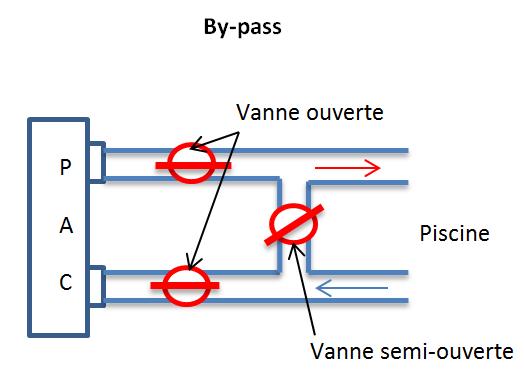
What preparatory tasks to prepare for the arrival of the pool heat pump?
Before delivery of the heat pump and in order to properly prepare for the arrival of the heat pump, there are a few purchases to plan for and a few steps to take. It takes little time and will save you as much time as possible when the time comes to install this equipment. The circuit breaker, the silencers, the cable will be essential, as will the construction of a bypass.
Which differential circuit breaker to choose for the heat pump?
It is essential to install a differential circuit breaker dedicated to the swimming pool heat pump. Its role is to cut off the power supply in the event of an overload or short-circuit. It measures the intensity which enters the installation and that which leaves it. If the difference between the two values is too great, the circuit breaker cuts off the power supply to the device. It therefore ensures the safety of goods and people.
The "D" type differential circuit breaker is particularly well suited to the heat pump because it can accept a greater load at start-up, over a short period. It can be installed by yourself or by an electrician.
How to size the electric cable of the heat pump?
The calibration of the electrical cables that supply the heat pump takes into account the distance that separates the heat pump from the electricity meter as well as the power of the device.
A cable segment that is too small leads to voltage losses (the boards electronics are sensitive to voltage drops and may deteriorate!) and overheating which may cause a fire. There is no contraindication for a segment that is too large except for a higher cost and a heavier cable.

How to make a collage?
To make the collages of the hydraulic system, it is necessary to have few materials, a saw, worm paper, paint stripper, blue glue, a cloth and have the right gesture. It is advisable to carry out these operations in a ventilated place and with protections, gloves, masks and goggles. First of all, the pipes must be cut perpendicular to the tube, then you have to scrape the parts that are going to be glued, remove the dust, apply a stripper to degrease. Parts must be clean and dry. Apply the blue glue evenly with a brush lengthwise outwards on both elements. Finally, fully fit the pieces together, without twisting them. Hold the assembly for a few seconds. Smooth around for a cleaner look. Drying is at least 24 hours. There you go, the bonding is finished, there will be no leaks if the operation is well carried out.
How to make a bypass?

The by-pass makes it possible to isolate the heat pump from the hydraulic system of the swimming pool in the event that there are repairs or maintenance to be carried out on the device. This allows the filtration system to continue to operate. The by-pass can modulate, regulate the water flow of the device. It is carried out with high pressure rigid pipe, 3 ball valves, and 2 tees (depending on the layout of the pool room). If the installation the technical room exists, it is of course necessary to cut off the electrical and hydraulic supply before starting the work.
The silence-blocks, the cable and the differential circuit breaker are purchased, the by-pass has been completed, everything is ready to receive the pool heat pump and enjoy a well-deserved swim.
To best prepare for the arrival of your pool heat pump, discover our advice and answers to the essential questions to ask yourself before installing the pump:
- Where to place the heat pump?
- What to do to prepare for the arrival of the pool heat pump?
- What protections for transporting the pool heat pump?
- How to route the heat pump near the swimming pool?